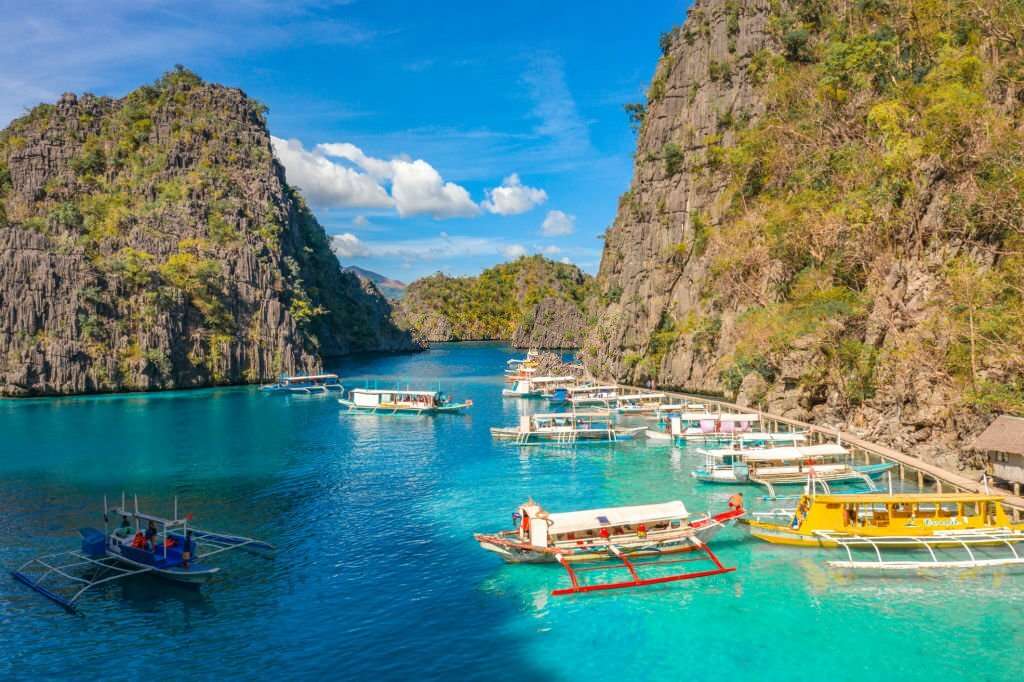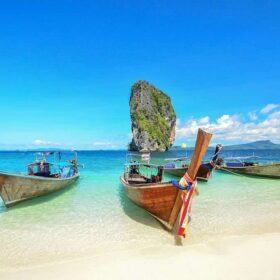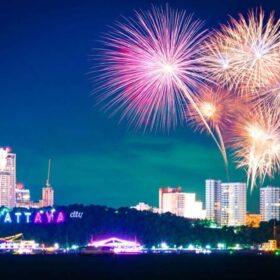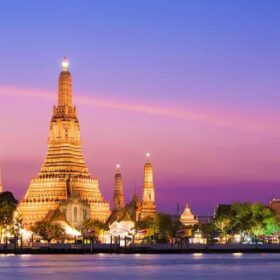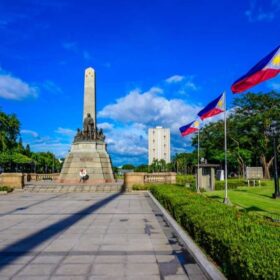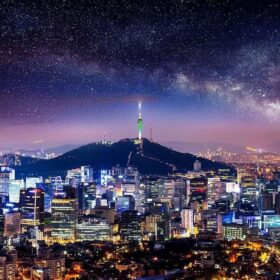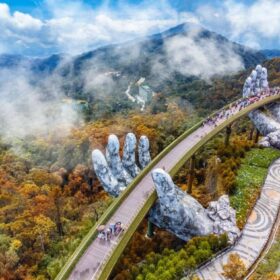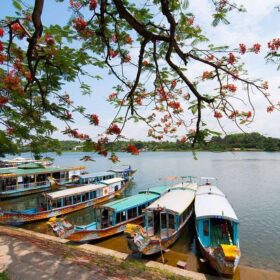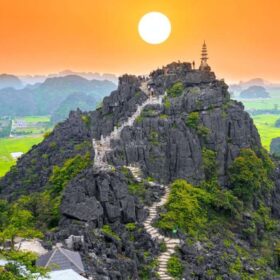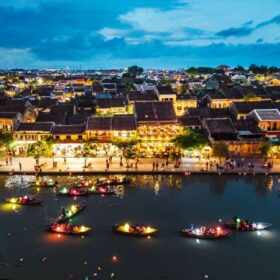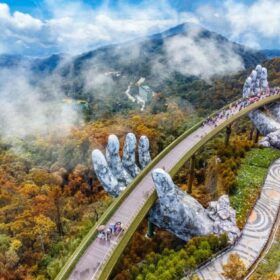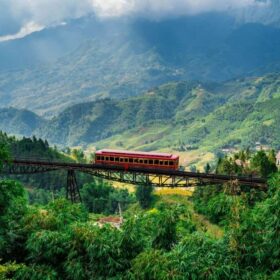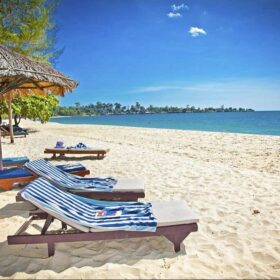The Philippines is a destination that beckons you to return time and again, thanks to its expansive array of more than 7,000 islands. For travelers, the most challenging decision to make is where to begin exploring. The Philippines is geographically divided into three primary island groups: Luzon, Visayas, and Mindanao, each offering its unique regional charm.
The landscapes within each of the Philippines’ regions span from mountainous and tropical to urban and cosmopolitan. You can spend a day strolling through the historic colonial streets of the capital city of Manila or catch a rare glimpse of tiny tarsier monkeys in a private sanctuary on Bohol Island. The lush, rugged mountains provide unforgettable hiking adventures.
With the Pacific Ocean surrounding you, it’s no wonder the Philippines boasts some of the finest beaches in Asia, along with exceptional scuba diving opportunities.
Chart your voyages across this tropical island nation with the help of our list of the best places to visit in the Philippines.
Palawan
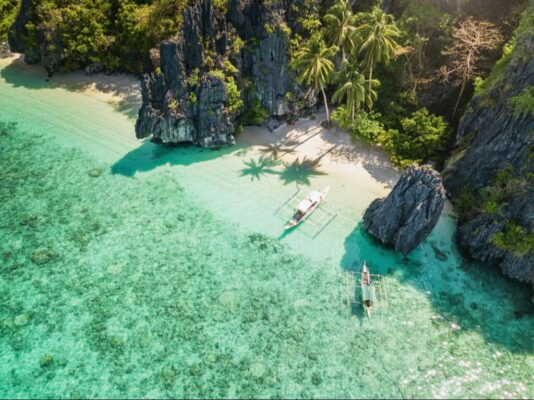
One of the best places to visit in the Philippines, Palawan is an island province that extends from Mindoro to Borneo, nestled between the South China and Sulu seas. The provincial capital, Puerto Princesa, is in proximity to expansive karst formations featuring an underground river.
Busuanga Island, home to the Coron Reefs, is a renowned diving location, attracting divers eager to explore Japanese shipwrecks dating back to World War II. Another favored destination is El Nido, a charming town nestled between imposing limestone karst cliffs and the exquisite Bacuit Bay.
Boracay
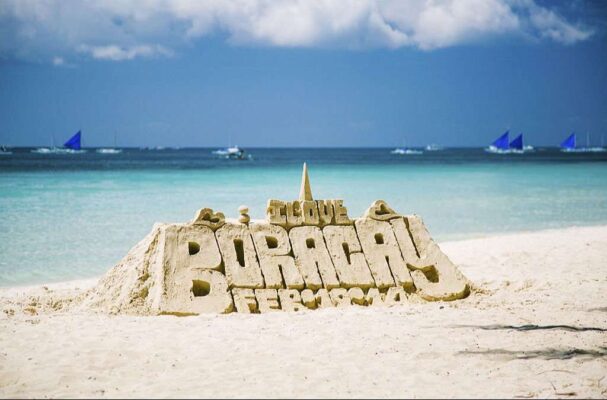
Immerse yourself in the allure of an island paradise, where endless stretches of pristine white sand beaches await. Embark on exhilarating journeys aboard vibrant outrigger sailboats, gliding through crystal-clear waters. Indulge in the luxurious comforts of exquisite resorts that adorn this captivating destination, renowned as one of the world’s top three beaches according to esteemed travel review sites. The central part of White Beach in Boracay is a bustling hub for travelers, offering a wide array of culinary delights, thrilling adventures, shopping experiences, and vibrant public festivities.
Venturing to more distant destinations, you’ll discover increasingly secluded options, albeit with fewer conveniences. Accommodations vary from affordable hostels to luxurious all-inclusive hotels, yet everyone can enjoy the pristine white beaches, crystal-clear waters, and enchanting atmosphere.
Manila
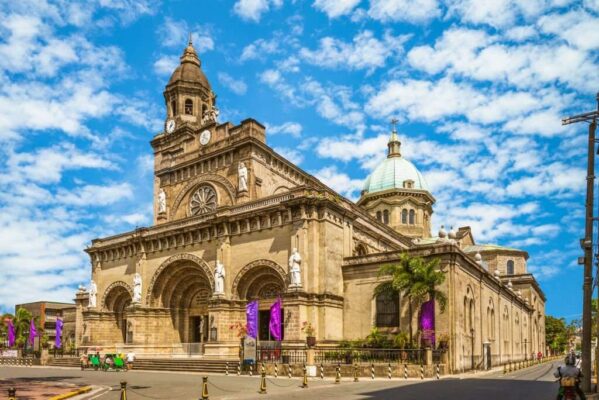
Manila, the capital of the Philippines and a major entry point for most tourists. This is a vibrant metropolis that offers a rich tapestry of both contemporary and historical cultures. Whether you’re exploring the city’s towering modern skyscrapers on a skyscraper gazing tour or delving into the turn-of-the-century landmarks during a self-guided downtown tour, Manila presents a multitude of attractions to discover.
The city’s culinary scene is a delightful mosaic of flavors, ranging from street cart delicacies to high-end dining establishments, reflecting a diverse blend of Spanish, indigenous, and Chinese influences that have contributed to the nation’s cuisine. With nearly two dozen annual festivals, there’s never a wrong time to visit Manila, as the city is always abuzz with celebrations.
Cebu
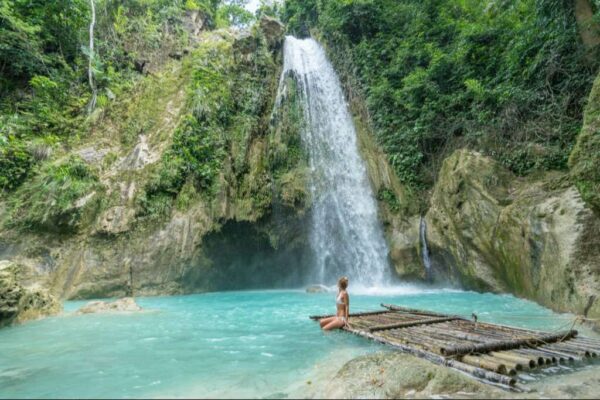
Cebu, an island province in the Philippines, is composed of the main island and 167 surrounding islets. Its capital, Cebu City, holds the distinction of being the oldest city in the Philippines and is served by the nation’s second international airport.
Cebu City mirrors Manila in many ways, offering a bustling urban experience that combines the best of modernity, tradition, innovation, and culture. What sets Cebu apart is its proximity to Mactan Island, renowned for its top-notch diving location that’s just a short drive from an international airport. Another diving treasure, the island and resorts of Malapascua, is accessible via a four-hour drive to the port town of Maya, followed by a boat journey. The effort is well rewarded, as Malapascua is often regarded as the premier diving destination in the country.
Tagaytay
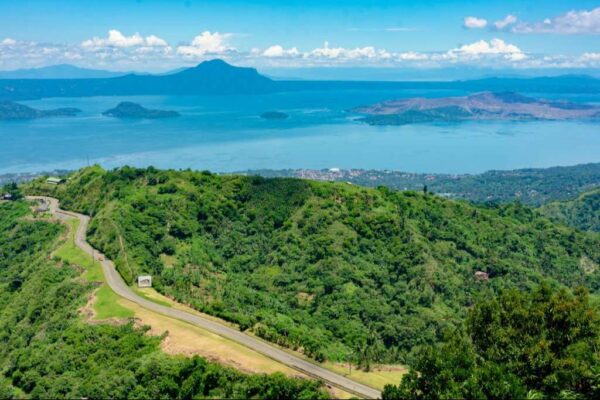
Located in the town of Tagaytay, the magnificent Taal volcano stands tall, offering a captivating blend of active and extinct craters. Its breathtaking landscape is a sight that should not be missed on your travel itinerary. Lake Taal is located within the historic Taal volcano crater, making it a captivating destination for travelers. The central island of the lake is home to active volcano craters, which occasionally emit steam, creating a mesmerizing sight for visitors.
Travelers who have never laid eyes on the breathtaking expanse of a crater lake firsthand will be mesmerized by the sheer beauty of these untouched waters. Nestled along this scenic ridge, the charming town of Tagaytay beckons travelers with its pristine beauty, relaxed atmosphere, and a paradise for culinary enthusiasts. When visiting this town, make sure to explore the Punta de Santiago lighthouse, St Anne Shrine, and the expansive local flower farm. These attractions are sure to captivate any traveler.
Donsol
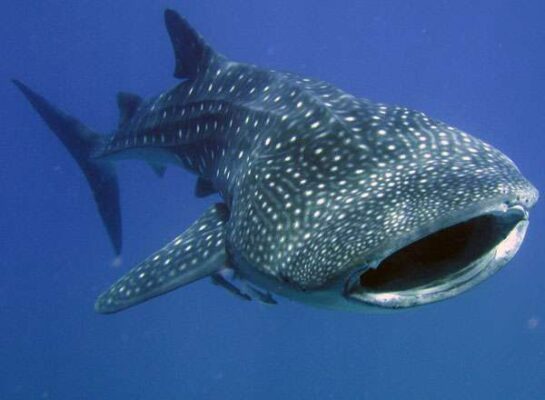
Nestled in the province of Sorsogon, a destination adorned with untouched beaches, breathtaking waterfalls, and undiscovered caves, the tranquil fishing village of Donsol stands out as a must-visit location in the Philippines for encountering magnificent whale sharks. Donsol Bay is a fantastic destination for those who enjoy tropical waters, as it provides an ideal habitat for various marine creatures.
Travelers have the opportunity to witness the migration of the protected species in Donsol from November to June, with the highest numbers occurring from February to May. While exploring the vast ocean, you may come across a magnificent fish that fearlessly swims toward boats. In fact, there are even boats that bear marks from their encounters with the fish’s propellers.
Mindoro
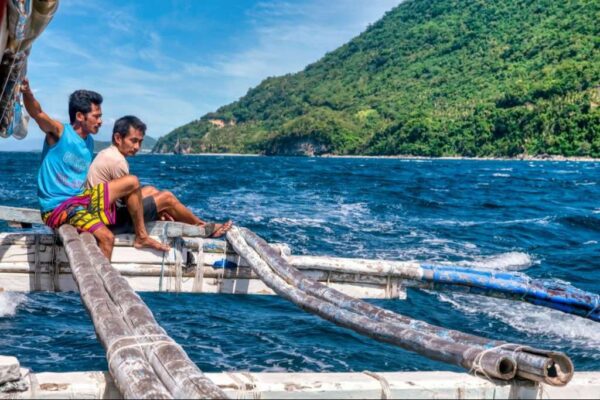
Mindoro is an island divided into two distinct regions, Mindoro Oriental and Mindoro Occidental, separated by a formidable mountain range. The northern part of the island is largely remote and inhabited by the indigenous Mangyan tribe. While this journey can be quite an adventure, it is especially rewarding for divers, as the town of Sablayan serves as the gateway to Pangan Island and the unspoiled Apo Reef Marine Natural Park.
There is only one resort on the island, so it’s advisable to make reservations in advance. In Mindoro Oriental, the primary tourist destination is the town of Puerto Galera. This idyllic beach town caters to water enthusiasts with its resorts and white sandy beaches, while also offering jeep excursions, orchid-adorned rainforests, kayaking on rivers, and access to picturesque waterfalls for those who love trekking.
Sagada
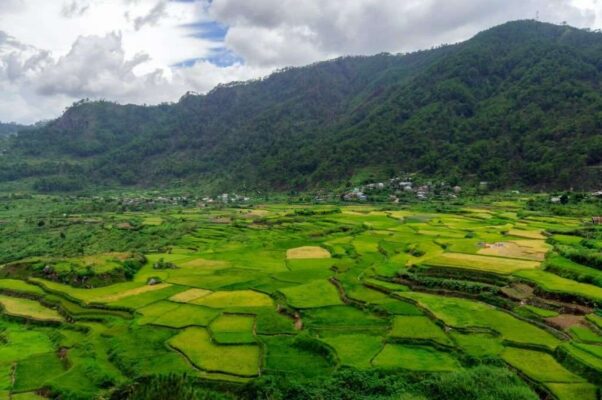
Sagada, located in the northern tribal region of the Philippines, offers one of the country’s most distinctive and immersive experiences. This remote area, nestled within the rugged Cordillera Mountains, welcomes occasional visitors, providing a unique opportunity to engage with local tribes.
Sagada is a paradise for seasoned outdoor enthusiasts. The steep mountains and high elevations add to the excitement and skill required for outdoor adventures. Hiking is a popular activity in Sagada, with options like climbing Mount Ampacao, which boasts the region’s highest peak or exploring Echo Valley with its challenging and rugged terrain.
One of the region’s must-visit attractions is the hanging coffins hidden deep in the mountains. To reach this incredible site, it’s advisable to enlist the services of a local guide, as this is not a typical tourist destination. Instead, it’s an authentic tribal region offering a one-of-a-kind experience that’s worth sharing as a point of pride.
Bohol
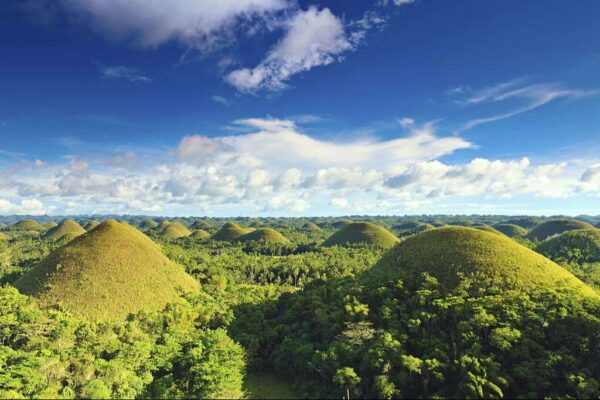
The island of Bohol is renowned for its stunning landscapes and captivating wildlife. One of its most iconic representatives is the adorable tarsier, with its striking orange eyes and delicate fingers. Located just a stone’s throw away from Cebu, this destination serves as a haven for the adorable primate species, offering a glimpse into their natural habitat. The captivating allure of the Chocolate Hills entices travelers who are not into diving to visit the area.
As you embark on your travel adventure, you will encounter the majestic hills that are reminiscent of ancient legends. These hills are said to have been shaped by the mighty force of an enraged giant, who hurled rocks with tremendous power. The majority of travelers to this destination, on the other hand, come here to experience the awe-inspiring diving opportunities that the area has in store. It serves as the starting point for exploring the marine reserves located near Pangalo and Pamalican islands.
Banaue
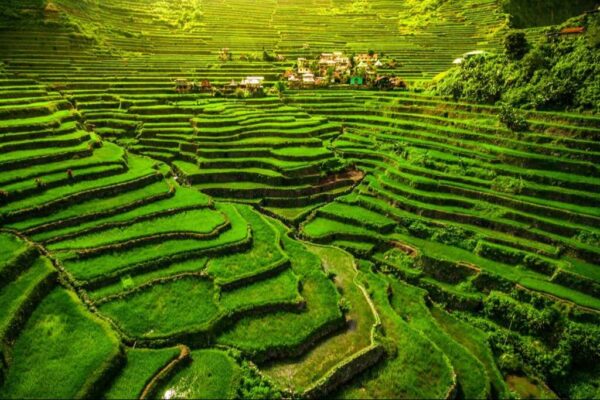
The rice terraces of Banaue are one of the most remarkable attractions in Philippines. These emerald-green terraces are an agricultural marvel in this region, with some of them believed to have been meticulously hand-carved into the mountainsides over 2,000 years ago.
Both the Batad Rice Terraces and the Bangaan Rice Terraces are recognized as protected UNESCO World Heritage sites. To gain a deeper understanding of this area, you can explore the Banaue Ethnic Village or the Hiwang Village, where you can engage with the Indigenous people who cultivate the rice terraces.
The most awe-inspiring view of the terraces can be experienced at sunrise, as the clouds and fog gradually lift from the mountains, unveiling the intricate landscape of the terraces. You can choose to stay in the town of Banaue and embark on hikes or drives to the Batad rice terraces, or for a more authentic experience, arrange lodging in a traditional hut belonging to the Ifugao people.
Baguio
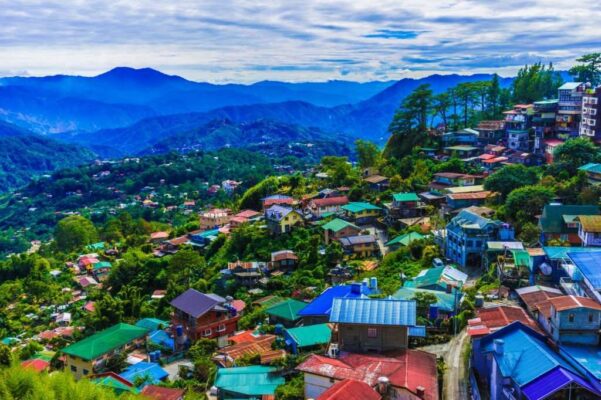
Baguio is a city nestled within the mountainous region of Luzon Island. Despite its city status, Baguio exudes an intimate and cottage-like ambiance. It is often referred to as the City of Pines due to the lush pine forests and cooler climate that envelop it.
While in Baguio, you can explore the numerous hiking and biking trails or partake in a round of golf at one of the nearby resorts. What sets Baguio apart from many other destinations in the Philippines is its surroundings of verdant trees rather than water.
Parks like Mines View and Burnham provide the opportunity to appreciate the unique flora and fauna indigenous to this area. Don’t forget to spend some time along Session Road, the city’s main thoroughfare, where you can immerse yourself in local life.
Puerto Princesa
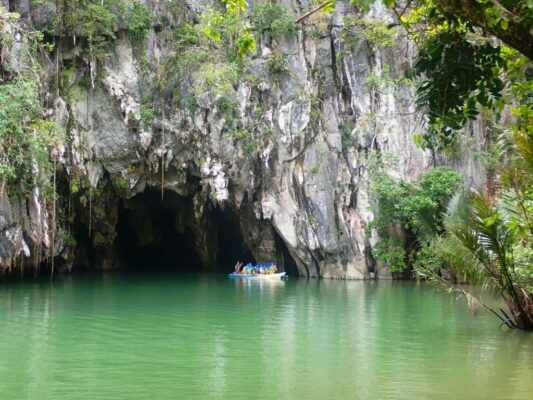
The rock islands, caves, and natural parks found on Palawan Island are a concealed paradise within the Philippines. To fully experience these natural treasures, it is advisable to make the coastal city of Puerto Princesa your home base.
A great starting point is the Subterranean River National Park, where you can explore a five-mile underground river and impressive limestone caves. This UNESCO World Heritage site offers boat tours that guide you through the national park.
Additionally, Puerto Princesa boasts other must-see attractions, including Honda Bay, renowned for snorkeling, and Ugong Rock, where you can engage in ziplining and caving adventures.
Accommodation: Where to Stay in Philippines: Best Areas & Hotels
FAQs
Q: What’s the best time to visit the Philippines?
A: The best time to visit is during the dry season, from November to April, when the weather is pleasant and ideal for outdoor activities.
Q: Is it safe to travel in the Philippines?
A: While most areas are safe for tourists, it’s advisable to stay informed about the latest travel advisories and exercise general precautions.
Q: What’s the local cuisine like in the Philippines?
A: Filipino cuisine is diverse and delicious. Don’t miss trying adobo, sinigang, lechon, and the exotic balut.
Q: How can I get around the Philippines?
A: Transport options include domestic flights, ferries, buses, and tricycles. Grab and Uber are also available in major cities.
Q: Are there any cultural customs I should be aware of?
A: Respect the local culture, remove your shoes before entering homes, and be polite and considerate towards the friendly Filipinos you’ll meet during your travels.

